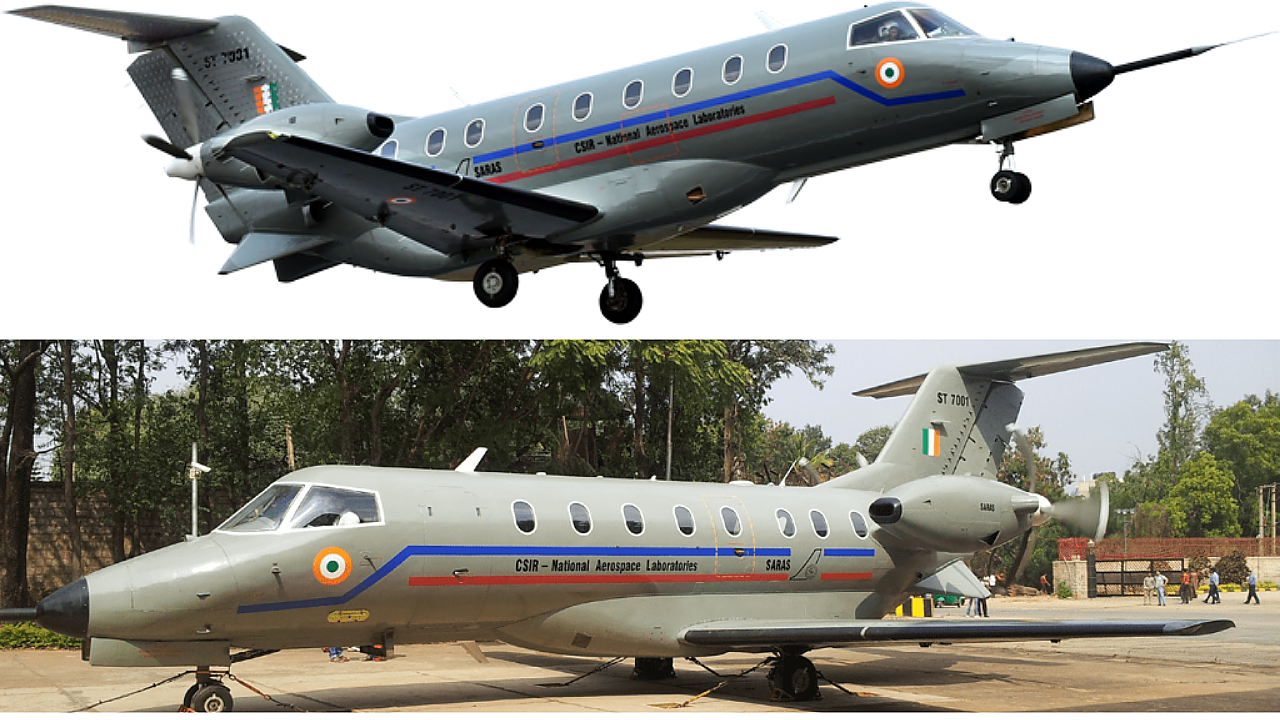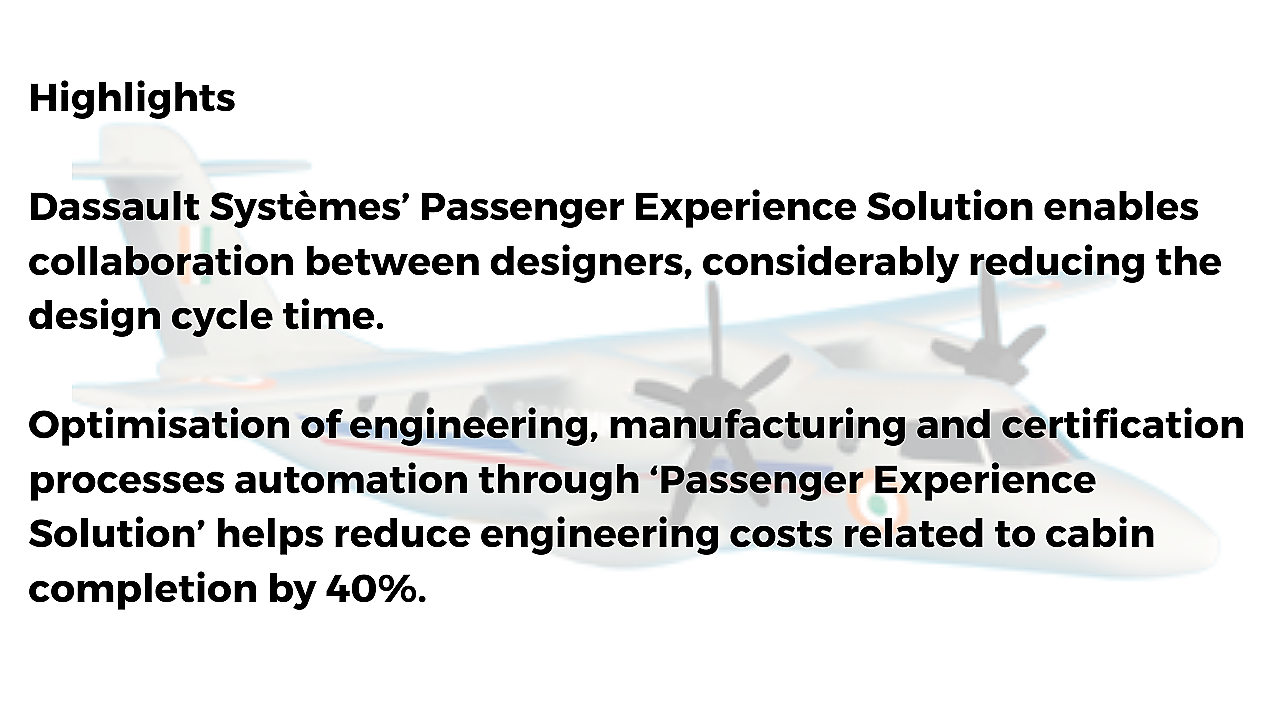
Dassault Systèmes’ “Passenger Experience” industry solution based on its 3DEXPERIENCE platform is being used to develop the Saras Mk-2 civilian aircraft by its designer National Aerospace Laboratories (NAL).
Bengaluru based NAL has been associating with Dassault Systèmes for the past 20 years, and this relationship has expanded further.
At Dassault Systèmes’ 3DEXPERIENCE Forum India 2021 event held recently in Bengaluru, Jitendra J Jadhav, Director, NAL, said the ongoing Saras Mk2 programme is aimed at developing a state-of-the-art commuter aircraft, certified for both military and civil use. NAL had decided to leverage digital technologies at the development stage itself to address the challenges related to product development and to reduce certification efforts.
“The 3DEXPERIENCE platform-based ‘Passenger Experience’ solution has been deployed in designing the cabin and cockpit of the Saras Mk-2 programme. Virtual twin-based insights offered by this solution helped us to configure the cabin for various use cases and scenarios,” Jadhav added.
Digitalising Design Process
The ‘Passenger Experience Solution’ was a vital aid to NAL to create a ‘Virtual Twin’ experience that helped accelerate and optimise collaboration between designers. Performing the early conceptual design phase using immersive virtual environments to design, explore and validate pilot ergonomics considerably reduced the design cycle time.

According to Dr Abhay Pashilkar, Programme Director, Civil Aircraft Projects, CSIR-NAL, the Passenger Experience Solution was an example of a tool that helped the Saras Mk-2 team accelerate and optimise the aircraft design. The other alternative would have been to build a cabin mockup, which would have consumed a lot of effort and time. “The use of a software solution allowed us to eliminate a large amount of manufacturing, tooling and allowed up to obtain a more optimal solution in terms of the cabin experience, both for our pilots as well as customers,” he said.
NAL, which falls under the auspices of the Council of Scientific and Industrial Research (CSIR), is also replacing its existing 2D CAD tools with Dassault Systèmes’ DraftSight. The feature-rich 2D and 3D Computer-Aided Design (CAD) solution is used for 2D design standardisation in civil aircraft manufacture.
The increased use of simulation and modelling solutions has resulted in a substantial decrease in the time taken to design and develop new aircraft.
According to Dassault Systèmes, optimisation of engineering, manufacturing and certification processes automation through the ‘Passenger Experience Solution’ experience help decrease engineering costs related to cabin completion by up to 40%.
Deepak NG, Managing Director, India, Dassault Systèmes, said, “As systems in the Aerospace and Defence industry become more complex to design, build and deliver, OEMs and suppliers need to accelerate innovation, drive efficiencies and adopt collaborative platforms to allow for greater agility on production rate.” He added that the company enables the players in the sector by providing new ways to conceptualise, design, manufacture, test, certify and sustain new air and space vehicles.
The Passenger Experience technology made its market debut in June 2015 and since then has been rapidly adopted by industry OEMs.

Virtual Optimisation
NAL’s Saras Mk-2 design team used Dassault Systèmes’ solutions to work on the aircraft’s cabin layout design and enhance passenger comfort and safety. During work on optimising the cabin layout, the design teams virtually studied aspects such as passenger ingress, cabin walkthrough, seating comfort, and baggage loading/unloading. Necessary certification led requirements such as emergency passenger evacuation were also studied virtually. These evaluations eventually helped NAL in deciding on an improvised cabin layout with enhanced passenger comfort and safety.
The software was also used for anthropometry studies for the design of the Saras Mk-2s cockpit layout. The objective for the NAL design team here was to evaluate aspects such as pilot reachability for cockpit instrument and mechanical controls. This is an essential aspect as the size, weight and height of pilots differ considerably. “We have to cater for a wide range of pilot sizes, typically 3-97% percentile of the pilots that have to fly this aircraft, have to be able to use and exercise the full range of the flight controls, without excessive strain, or discomfort. They also have reach all cockpit controls, including knobs and buttons, while still seated,” Dr Pashilkar said. The above steps led to a reduction in the overall design cycle time.
The “Passenger Experience” industry solution was also used to undertake a pilot outside field vision assessment virtually. This was done to validate the pilot’s cockpit field vision from the cockpit during approach to the runway in day and night operations. NAL was able to incorporate design changes based on the learnings and ensured adequate vision for pilots to perform safe runway operations. Immersive Virtual Reality (VR) was also used for maintainability and serviceability studies. This allowed accessibility studies for the use of LRUs and an assessment to be made on the ease of maintenance, using VR based visualisation, allowing an upfront validation of the design for serviceability.
Saras Mk-2
The Saras programme has been in the making since 1999 and almost became defunct following a fatal crash during a test flight of the first prototype in 2009. The unconventional twin-engine pusher configuration (engines facing rearwards) has now been abandoned for a more conventional forward-facing twin-engine configuration. The 19-seater Saras Mk-2 will have a pressurised cabin and be able to operate from semi-prepared airfields. NAL is the design agency for the aircraft, and the military variant of the aircraft will be produced by HAL and production of the civil variant could be handed over to the private sector.